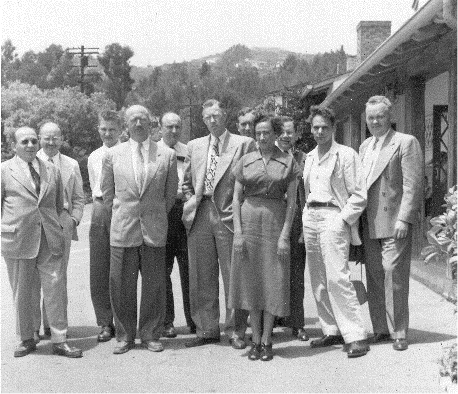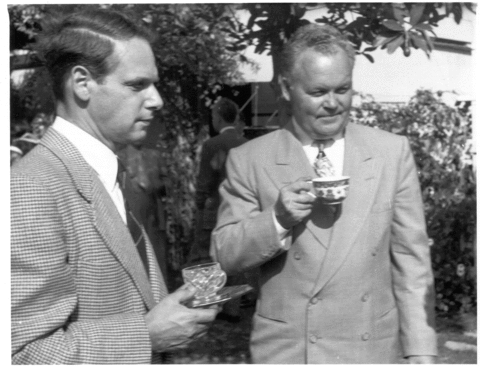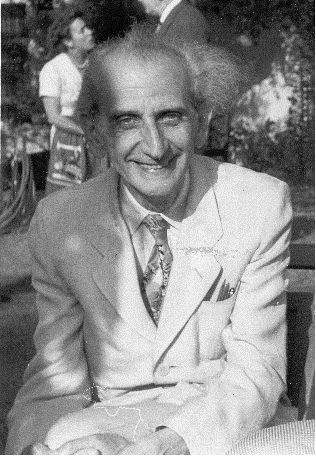INA Pioneers the Field of Numerical Analysis
Dates: 1947-1954
The NBS Institute for Numerical Analysis helped establish the field of numerical analysis, i.e., the development and analysis of techniques for the solution to complex mathematical problems using computers, as an important new field of study and application.
The emergence of automatic digital computers in the late 1940s provided great hope for the ability to solve to difficult mathematical problems in science and engineering which previously had been impervious to analysis. Potential application in industry and government were many, the use of applied mathematics and computation having been of particular important in the war effort. But experience in large-scale numerical computation was relatively rare, with many mathematicians showing little interest in the subject. Developing this new field of numerical analysis, and providing it with legitimacy, was one of the main reasons that NBS, with the support of the Office of Naval Research, established its Institute for Numerical Analysis (INA) on the campus of UCLA in 1948.
The official set of functions of the INA was [2]:
- Plan and conduct a program of research in pure and applied mathematics directed primarily at developing methods of analysis which will permit the most efficient and general use of high-speed automatic digital computing machinery.
- Conduct training programs for personnel of industry, Government agencies, and educational institutions, in the theory and disciplines needed for the full exploitation of high-speed automatic digital computing equipment.
- Study and formulate requirements for the intelligence and internal organization which high-speed automatic computing machinery should have; develop overall performance specifications for such machinery.
- Serve as a center at which competent scholars can explore the usefulness of high-speed automatic digital computing machinery in their own fields of interest.
- Formulate requirements for further mathematical tables and other aids to computation; review the overall program of the National Applied Mathematical Laboratories with regard to the production of such objects and advise the Administration and Executive Council accordingly.
- Review, analyze, and, as necessary, assist in the mathematical formulation of problems in applied mathematics of the more complex and novel type arising in outside laboratories.
- Provide a computing service containing both standard and high-speed automatic equipment (when available) for local industries, educational institutions, and Government agencies.
- Assist and conduct liaison with related programs in local educational institutions.
- Maintain a consulting service on special problems in applied mathematics.
- Prepare reports of the research described above; also prepare training manuals, bibliographies, and indices.

The INA carried out its work with a small core staff of Federal employees, along with a large number of short- and long-term visiting researchers. The list of INA staff and long-term visitors reads like a who’s who list of early numerical analysis. These include John, Todd, Olga Taussky, Gertrude Blanch, George Forsythe, Douglas Hartree, Cornelius Lanczos, Alexander Ostrowski, J. Barkley Rosser, Forman S. Acton, Magnus Hestenes, Mark Kac, Wolfgang Wasow, Fritz John, Derrick Lehmer, and Eduard Stiefel. Summer visitors included Richard Feynman, Paul Erdos, Herman Goldstine, Lipman Bers, Maurice Wilkes, and Harold W. Kuhn.
The topic areas addressed by INA researchers included the numerical solution of ordinary and partial differential equations, construction of conformal maps, iterative solution of large linear systems of algebraic equations, computation of eigenvalues of matrices ,and probabilistic (Monte Carlo) methods.
Sadly, the INA suffered from the aftermath of the AD-X2 battery additive controversy. As part of the settlement of that affair, NBS was required to divest itself of defense-related research, which had been ramped up significantly during the war
In 1953, NBS was ordered to divest itself of its weaponry development programs, which had ramped up significantly during the war years; those programs were transferred to the department of Defense. Along with this, the Secretary of Defense decided to no longer permit a non-DOD Government agency to serve as administrator of projects carried out at a university but supported entirely, or in large part, by DOD funds. Since the INA was supported by ONR funding, NBS gave up its administration of INA in June 1954.
INA researchers found new positions across the globe. For example, George Forsythe moved to Stanford University, where he was the founding head of its Computer Science Department. John Todd and Olga Taussky moved to Caltech. Cornelius Lanczos took a position at the Dublin Institute for Advanced Studies.
Hestenes and Todd summarized the legacy of the INA this way [2]:
In a sense the researchers at INA pioneered in modern numerical analysis. "Graduates" of INA are scattered all over the United States and elsewhere. They have done much to promote the development of numerical mathematics pertinent for use of computing machines for scientific and educational purposes.
References
- J. H. Curtiss. The National Applied Mathematics Laboratories of the National Bureau of Standards --- A Progress Report Covering the First Five Years of Its Existence. Annals of the History of Computing 11 (1989), 69-98.
- M. R. Hestenes and J. Todd. NBS-INA --- The Institute for Numerical Analysis --- UCLA 1947-1954. NIST Special Publication 730, 1991.



